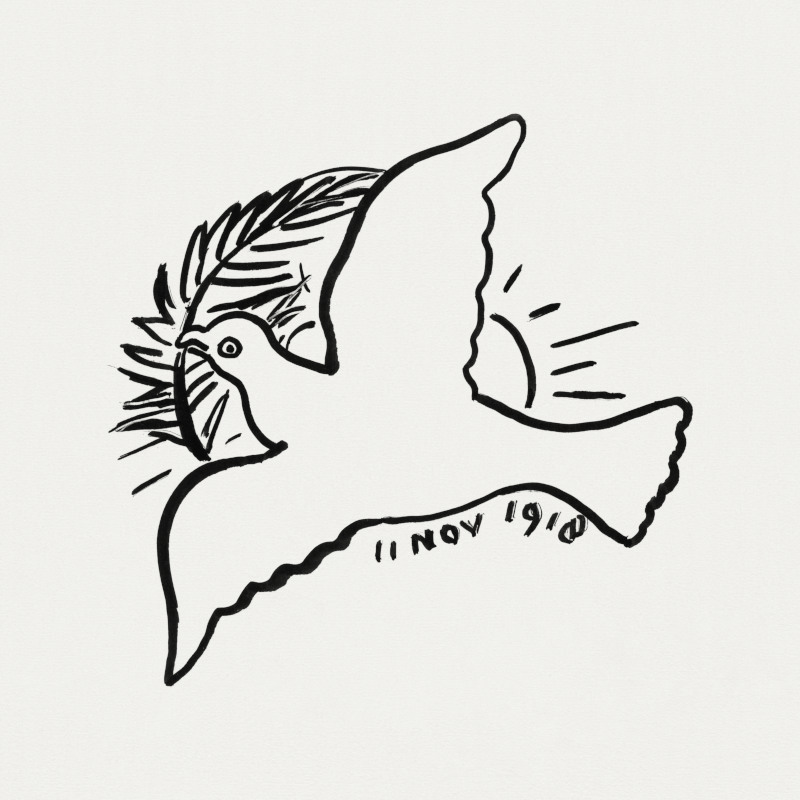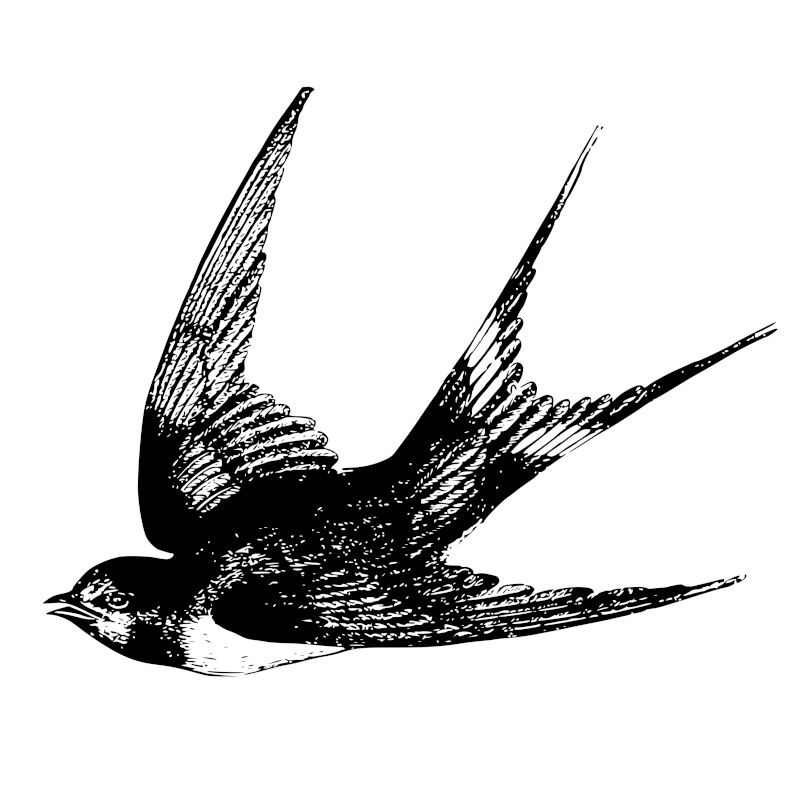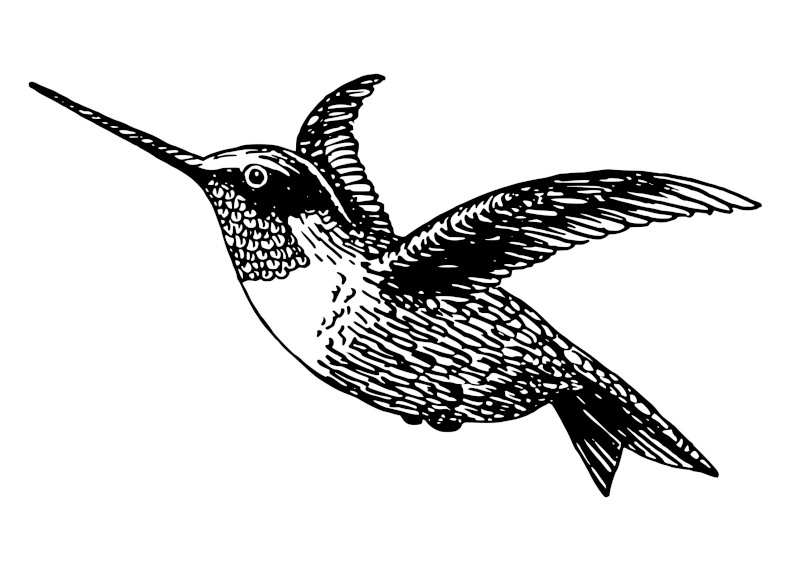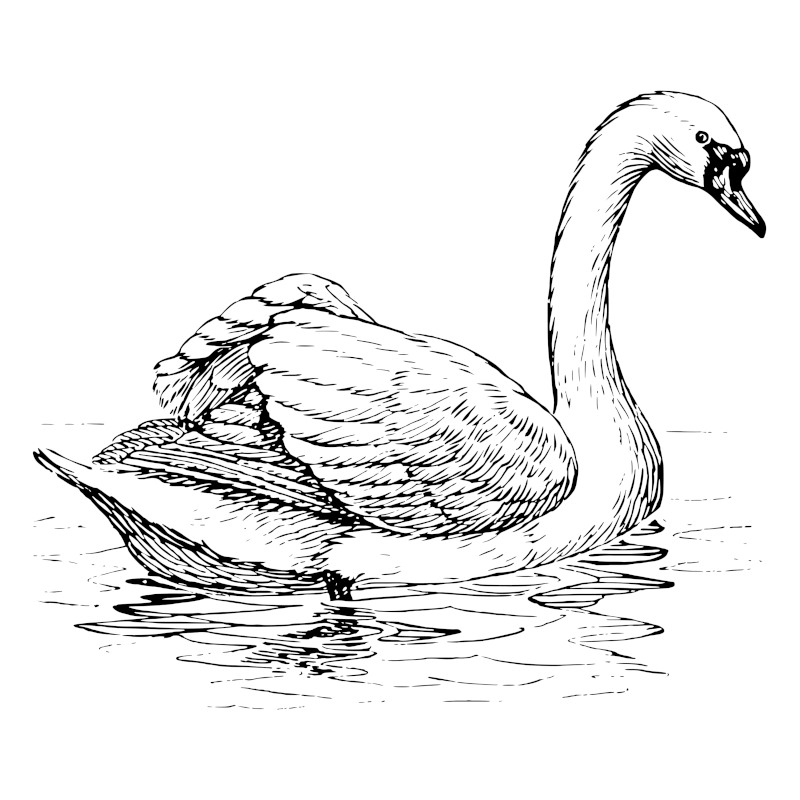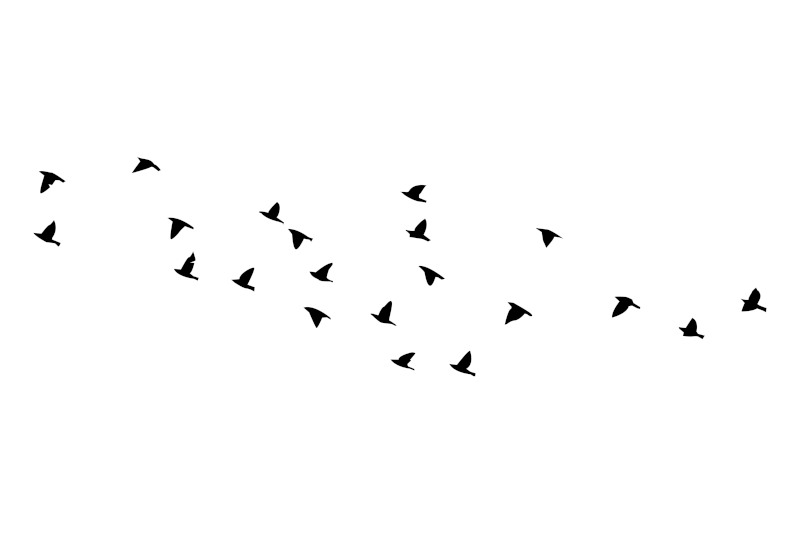Discover some famous bird drawings and paintings, alongside some helpful easy ideas for those looking to sketch their own creations.
Introduction to Bird Drawings
Bird drawings and paintings have enchanted us all for centuries, whilst also helping to teach the public about these important creatures. Whilst the style of bird art has changed significantly over this time, artists have never lost their interest in these beautiful creatures. Indeed, birds have been present in pretty much all art movements that you care to mention, and they peaked in interest during the 19th century.
This article will display some of the most famous bird drawings from the past few centuries, and include detail about their respective creators. There is therefore a wealth of art to enjoy here, with carefully hand-picked artowrks which show the beauty of birds, along with the impressive technical abilities of a number of sketchers, oil painters and watercolorists. We have attempted to include as many different artistic styles and species of birds as possible, though the main focus is on 19th century bird art, at which point this genre was at its most fashionable.
List of Bird Drawings
Find below a list of bird drawings and paintings from the realms of art history, and we have attempted to deliver as wide a selection as possible. You will therefore find variety of artistic styles and tools, whilst also featuring different bird species within that. The methods of composition also vary, with some creatures in their natural habitats, whilst others are simple, single line abstract creations.
Many of the bird artworks are from famous artists of the past two centuries, and are provided with small summarises about the artists' lives alongside each image. There is also further discussion about various subjects related to bird art further down the article, including some of the techniques used by artists and also the role of bird drawings and paintings in the conservation of birds right across the western world, and beyond.
Peace Dove Drawing in High Resolution by Leo Gestel
Leo Gestel was a famous Dutch artist from the late 19th and early 20th century. He worked in a manner of styles, including Cubism and Expressionism, but he was also highly skilled as a draughtsman. He worked using simple lines to construct his drawings, and featured horses and birds a number of times. This drawing uses symbolism, specific to the combination of doves and the theme of peace. Picasso would later construct something fairly similar with his own line drawings, and doves seems to appeal to a number of artists across the 20th century. The bird here is joined by a feather and the sun, which appears from behind its right wing.
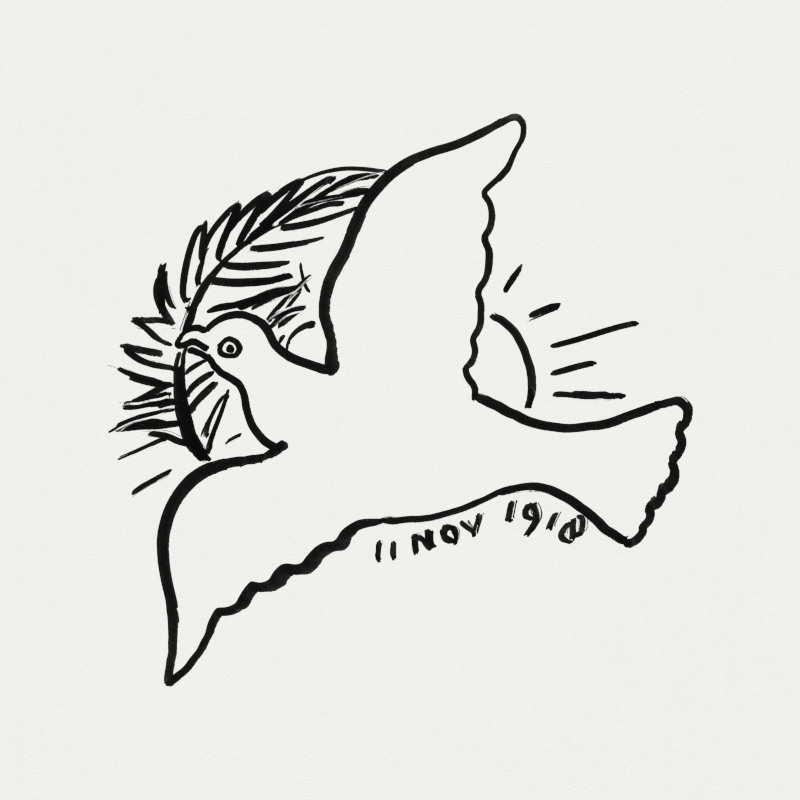 Peace Dove Drawing in High Resolution by Leo Gestel
Peace Dove Drawing in High Resolution by Leo Gestel
Pigeon on a Branch of a Chestnut Tree Line Drawing by Leo Gestel
In this alternative drawing by Leo Gestel, we find a pigeon looking off to our right, whilst perched on a flowering branch. Gestel worked in a modern fashion with these drawings, using just a few lines to carefully construct a charming piece. He signed his initial G on the artwork. Many are unaware of his achievements as a draughtsman, with his oil paintings being more famous since his passing in the mid 20th century.
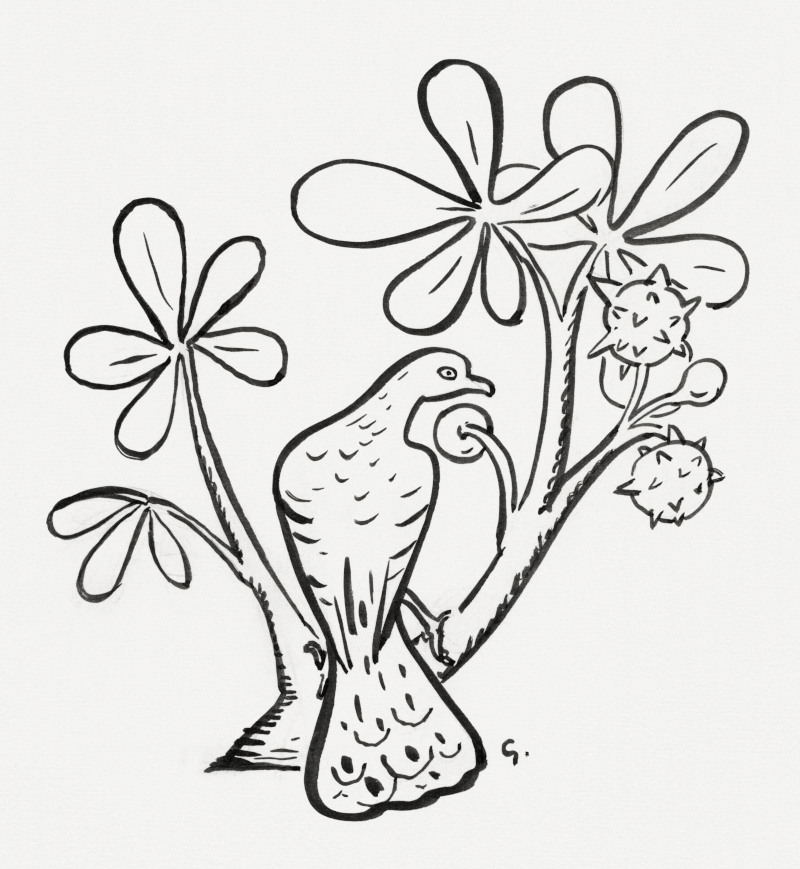 Pigeon on a Branch of a Chestnut Tree Line Drawing by Leo Gestel
Pigeon on a Branch of a Chestnut Tree Line Drawing by Leo Gestel
Lesser Flamingo Painting by C. G. Finch-Davies
C. G. Finch-Davies was a British ornithologist and painter who did much of his work whilst living in South Africa. This brought many new species to the attention of British bird-lovers, and eventually he collated his observations and art into series devoted to the birds of South Africa. Below we find a Lesser Flamingo, which is amongst the brighest and most beautifully detailed works that he produced.
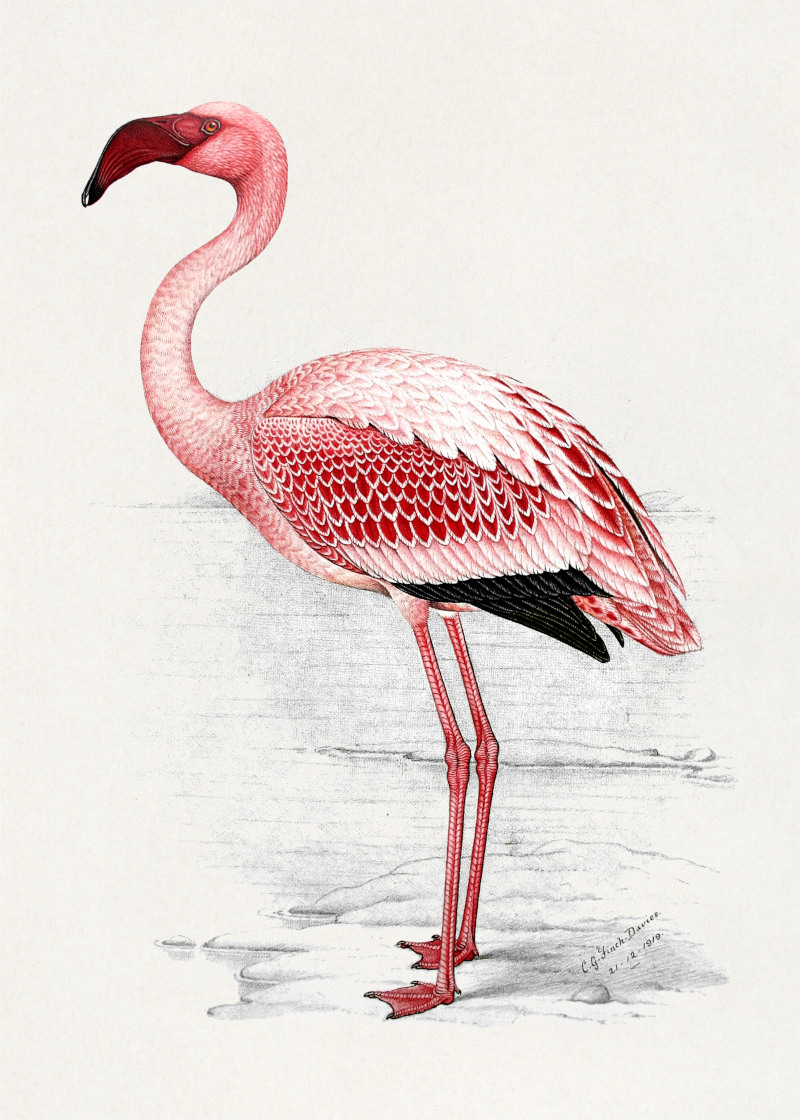 Lesser Flamingo Painting by C. G. Finch-Davies
Lesser Flamingo Painting by C. G. Finch-Davies
Scarlet Ibis with an Egg by Maria Sibylla Merian
Maria Sibylla Merian was a German entomologist and illustrator who was connected to the use of bird drawings within science. The artwork below captures a proud Scarlet Ibis, and captures the beauty of this brightly colored creature. She would spread her talents to depicting many different plants as well as butterflies and other items across a highly productive career.
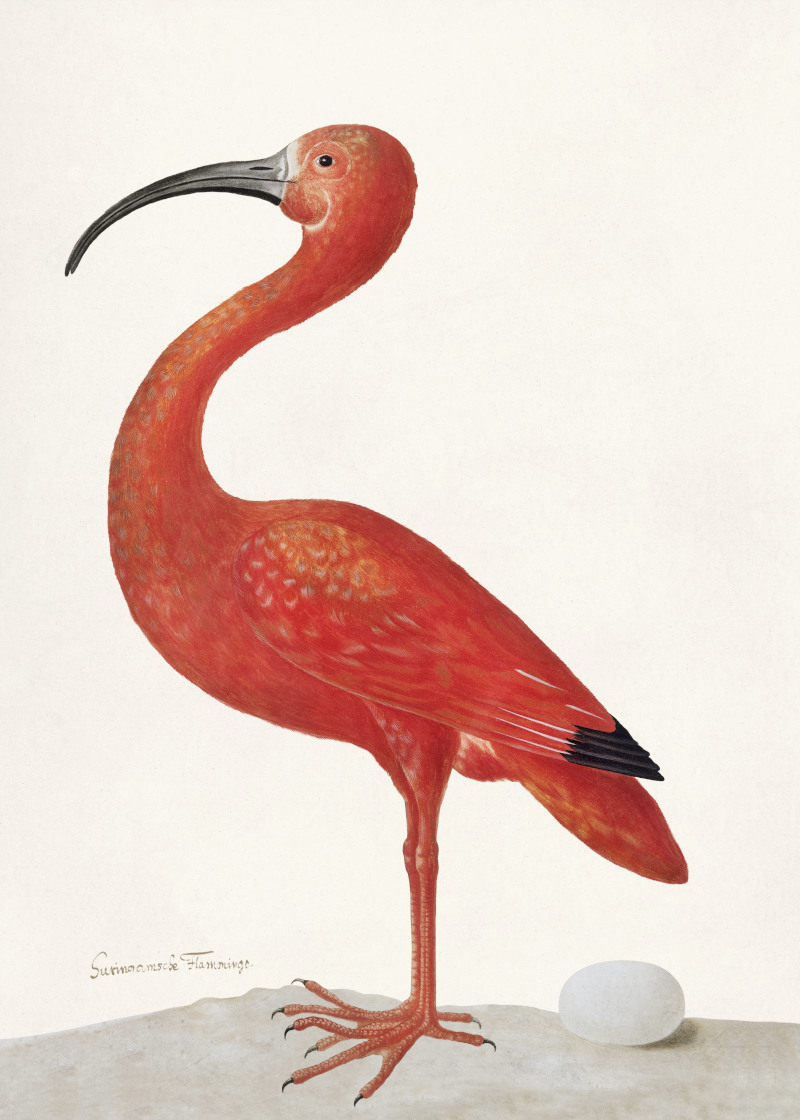 Scarlet Ibis with an Egg by Maria Sibylla Merian
Scarlet Ibis with an Egg by Maria Sibylla Merian
18th century Illustration of a European Green Woodpecker
This charming illustration from the 18th century captures a Green Woodpecker clutching a branch, with a rose head lying close by. A butterfly and moth appear from each side of the work to provide additional interest and to give the impression of an organic composition, displaying an abundance of life. The main strength of this work is in the stunning colors displayed by the bird, including tones of yellow, black, white, green and red.
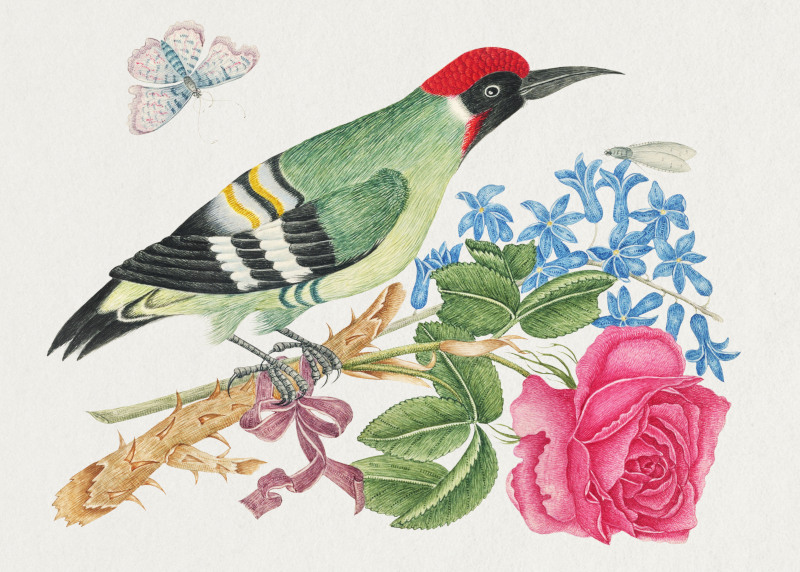 18th century Illustration of a European Green Woodpecker
18th century Illustration of a European Green Woodpecker
Red Crown Crane, Bird Painting by Ogata Korin
Ogata Korin displays here the alternative approach taken by Japanese artists as compared to their European counterparts. Detail is reduced to produce a charming scene of cranes, all set against a carefully toned background which allows the white necks to stand out. All but one hold the same pose, and there is a slight elongation of form to make the legs particular slim in comparison to the rest of the cranes' bodies.
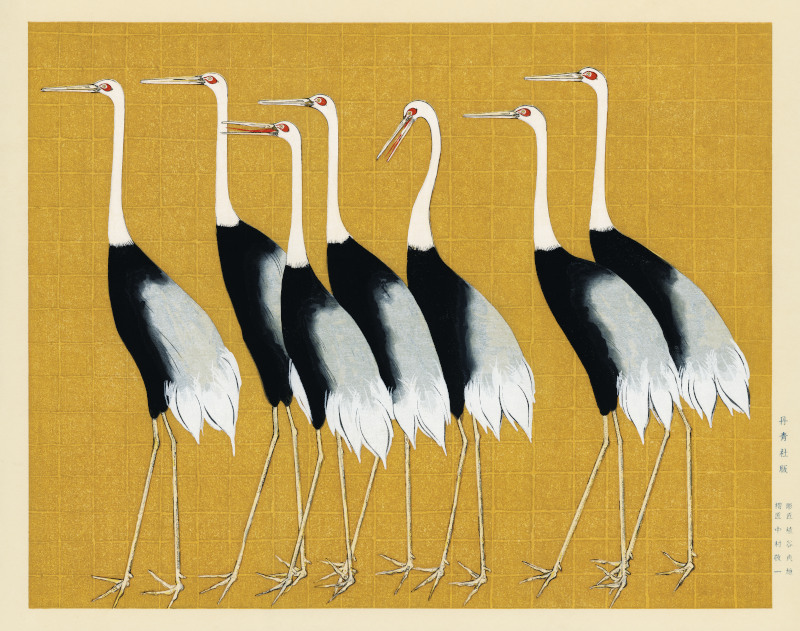 Red Crown Crane, Bird Painting by Ogata Korin
Red Crown Crane, Bird Painting by Ogata Korin
Spotted Eagle-Owl Animal Art by Nicolas Huet
Nicolas Huet delivers a detailed image of an owl in this vintage drawing. The artist relies on subtle changes in brown tones, with complex detail capturing the beauty of this famous type of bird. Birds are often found in art perched on a branch as a means to creating an image of a natural habitat, but without distracting the viewer from the main focal point.
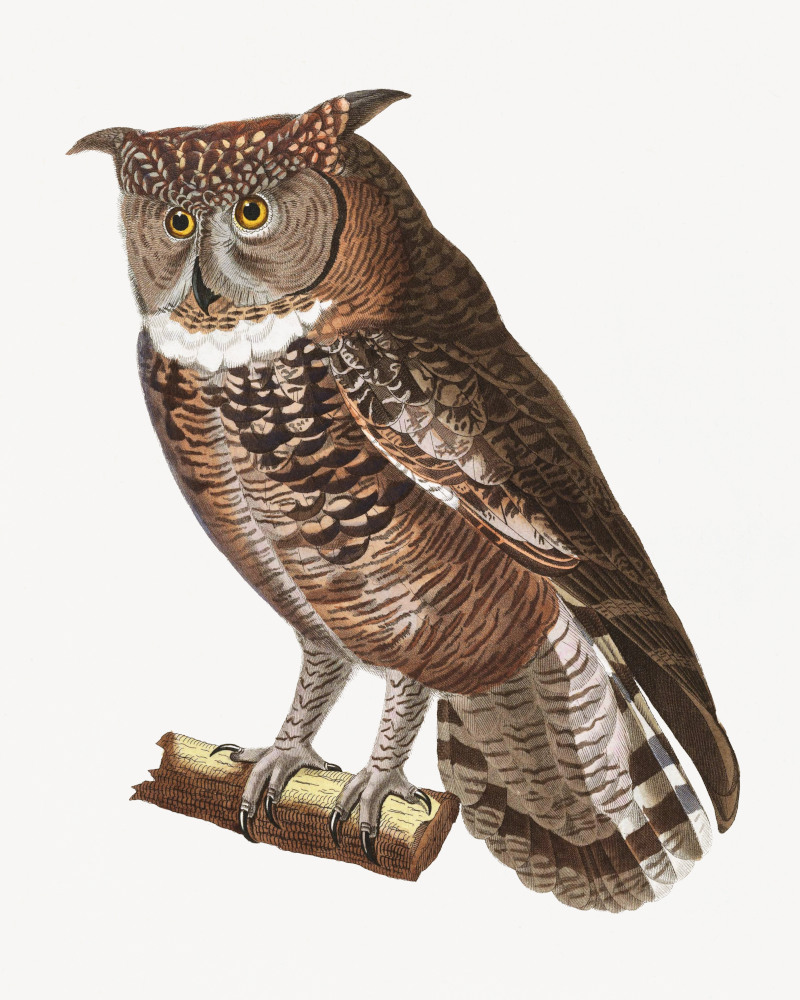 Spotted Eagle-Owl Animal Art by Nicolas Huet
Spotted Eagle-Owl Animal Art by Nicolas Huet
Swallow Bird Illustration
Here we find an illustration of a swallow which could easily be traced around the outside for those looking to practice their skills. The individual feathers on each wing are more complex however, as well as across the tail. The bird is angled as if in flight.
Vintage Hummingbird Drawing
This vintage illustration features a hummingbird pointing out his beak in a manner with which we are all familiar. This popular bird is regularly covered in bird art, normally as a means to incorporating the species' stunning colors but in this example it is purely in line, as if drawn through digital art or perhaps from vintage ink techniques.
Bluebird Perched on Branch Bird Drawing
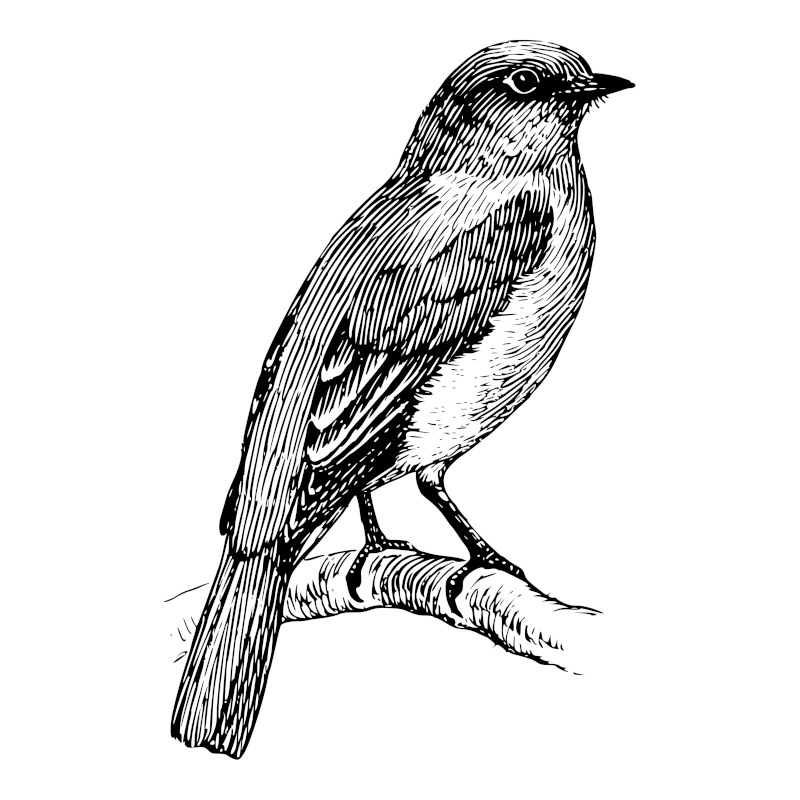 Bluebird Perched on Branch Bird Drawing
Bluebird Perched on Branch Bird Drawing
Swan Line Drawing
Perhaps the most elegant and graceful birds of them all, the swan is found here in a simple line drawing which could be traced in order to hone your drawing skills. Most detail focuses on the wings which are tucked inside as the swan navigates a gentle river. A small amount of the river is shown rippling in the light as this creature makes its way onwards. Individual lines from the drawing can be seen and learnt from, as a means to understanding just how the artist built this composition up as they went.
Large Billed Puffin from Birds of America by John James Audubon
Audubon is one of the most famous bird artists, though he also covered many other creatures within his career. His level of detail and accuracy was extraordinary and he remains highly regarded and well known even today. His puffins were amongst his most charming selection, and in this example are looking at each other as we find a simple landscape across the background, fading into the distance. The bright yellow beaks stand out beautifully against the strong tones of white and black found elsewhere on these popular birds.
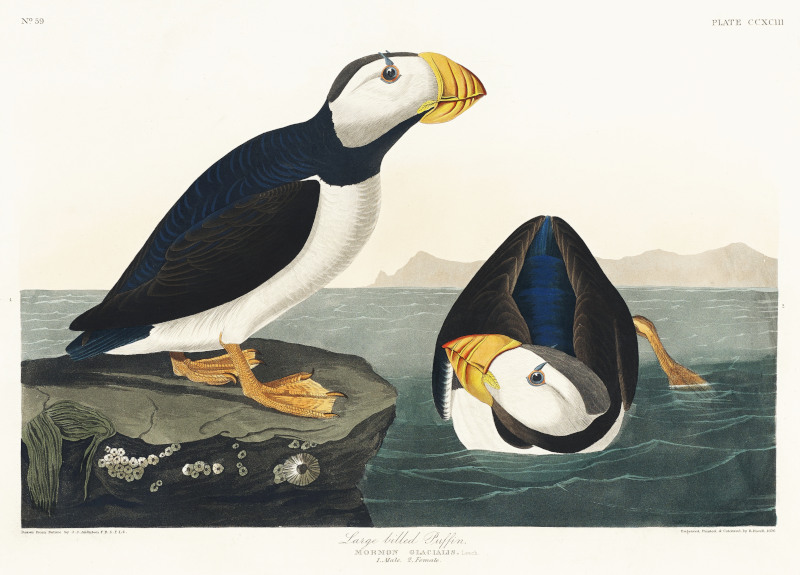 Large Billed Puffin from Birds of America by John James Audubon
Large Billed Puffin from Birds of America by John James Audubon
Pink Flamingo from Birds of America by John James Audubon
Pink Flamingo is derived from Audubon's Birds of America series, and remains one of the most famous iterations from this respected series. Audubon inspired many other bird artists, leading to the genre expanding over time. During the 19th century, interest in artworks such as these was at its highest, but many still today like to acquire print reproductions of these original illustrations.
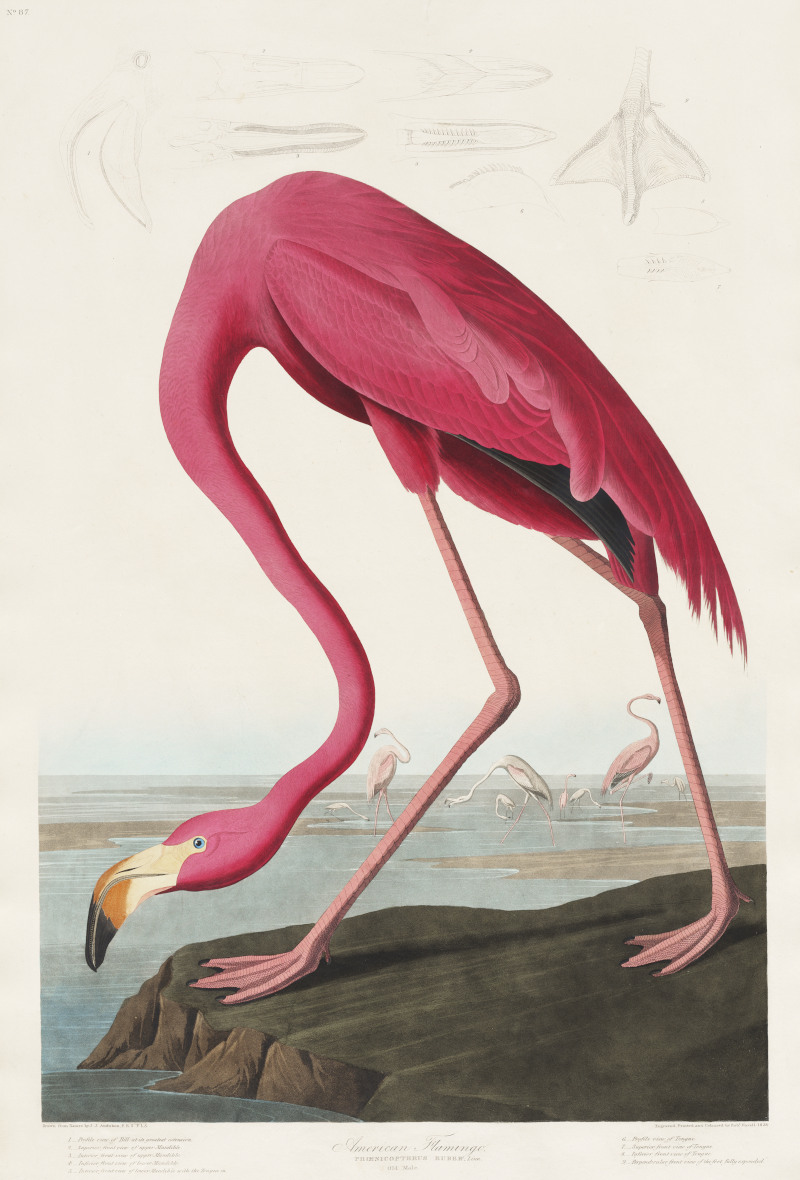 Pink Flamingo from Birds of America by John James Audubon
Pink Flamingo from Birds of America by John James Audubon
Birds Flying Silhouette
This simple silhouette provides a great summary of the shape of birds as they take flight, and could be used as a means to study the common structure of a bird as it flaps its wings. The silhouette style allows us to focus entirely on the outline of these creatures, rather then being distracted by the beauty of their wing detail.
Colorful Vintage Hummingbird Illustration
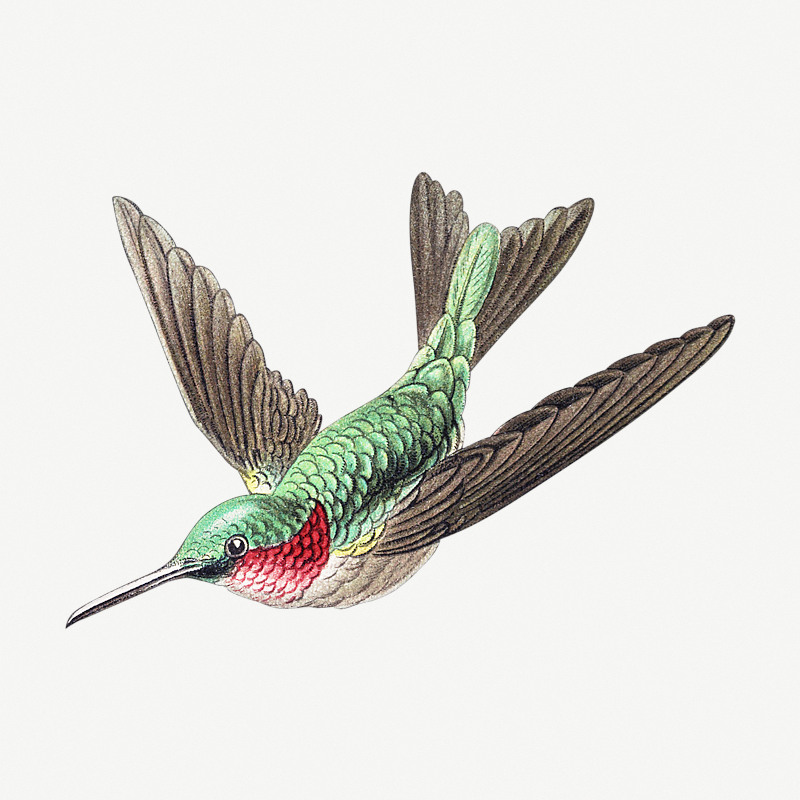 Colorful Vintage Hummingbird Illustration
Colorful Vintage Hummingbird Illustration
Who are Some of the Most Famous Bird Artists?
Many of the most famous bird artists came about in the 19th century, when the fashion for this genre was particularly strong. Bird art offered education alongside providing stunning wall art, in a similar manner to butterfly drawings from various collections found in the UK and US. Most of the artists listed below worked as draughtsmen, but also made use of painting mediums such as oils and watercolors.
John James Audubon (1785-1851) - This artist is best nown for his series titled "The Birds of America," which featured detailed and lifelike illustrations of various North American bird species. He would also cover animals within his wide ranging studies, and became known as one of the specialists and most talented artists within this genre. His work continues to be lauded today, thanks to a strong legacy brought about by the success of his Birds of America series.
John Gould (1804-1881) - Gould was an English ornithologist and artist who became highly regarded for illustrative series such as "The Birds of Europe" and "The Birds of Australia." He was also passionate about his studies and went to extraordinary lengths to ensure as much accuracy within his bird art as possible.
Elizabeth Gould (1804-1841) - Elizabeth was another respected English artist from the 19th century who worked alongside her husband, John Gould. They produced impressive illustrations of birds, and she was able to gain attention to her work despite the barriers faced by many female artists at that time.
Archibald Thorburn (1860-1935) - Thorburn brought the Scottish wildlife to our attention through a series of delicate watercolor paintings of birds and other creatures that could be found around Scotland in the late 19th and early 20th century. Whilst birds were common in his oeuvre, there were also many other creatures featured such as peacocks, mice and pheasants.
Bruno Liljefors (1860-1939) - This respected Swedish artist from the turn of the century regularly focused on animals and birds within their natural habitats, making his work particularly suitable as hangable art, as opposed to some of the more educational depictions from other artists. Liljefors was part of the spread of bird art across northern Europe, where it flourished right across the 19th century.
George Edward Lodge (1860-1954) - Lodge was another successful English artist and ornithologist who produced high quality illustrations of birds for a number of different publications. Many of these delightful books are still available today, allowing his art to continue to be enjoyed by new generations. Lodge passed away in the mid-20th century, by which point interest in this genre was starting to wane.
Louis Agassiz Fuertes (1874-1927) - This talented American artist and ornithologist specialised in bird drawings throughout his lifetime and captured a number of species which were specific to North America, providing an excellent alternative to the other English artists involved in this genre.
Tools of the Trade: Exploring the Materials and Mediums for Bird Drawings
Birds have been depicted by thousands of artists over the centuries, to differing levels of success and accuracy. Many have experimented with different tools in order to best represent these stunning creatures, and have achieved a variety of styles from that. Most of the artists featured in this article would focus on standard drawing tools as well as painting in oils and watercolors, but there have also been other tools and techniques used since the rise of bird art in the early to mid 19th century.
Pencils, colored pencils, ink, charcoal and pastels have also been tried out with regards drawings, with each having their own advantages. Ink, for example, give the clearest and boldest of line, but is much harder to correct mistakes than when using pencil. Watercolors, oils and acrylics have been used for bird paintings, with qualities of each medium being well known. Oils often produce the boldest of color, whilst watercolors can be produced quickly, and more easily when travelling in natural environments.
The Role of Bird Drawings in Conservation and Education
Bird drawings and paintings have helped in efforts to conserve bird species, and to educate the public. Precise art can teach us much about each species of bird, and many artists would have a strong passion to observe and accurately depict each creature. Most were more than mere artists, and so their work could be trusted for accuracy. Many of the drawings were used alongside written texts as a means to bringing the information to life in various publications, pricking the interest of the viewer by avoiding long streams of text.
Most artists mentioned in this article would have produced illustrations for bird and animal publications during their careers, making their work both aesthetically pleasing, but also educational. Other artists helped to create posters to draw attention to conservation campaigns, again putting their design skills to good use. Most featured here were passionate about the environment, just as with landscape painters such as the Hudson River School from North America.
Additionally, for those who depicted birds in their natural habitats, some would work alongside ornithologists in order to correctly replicate bird behavior, and these interpretations made particularly charming artwork. Some bird art has also been used by activists to promote similar causes, sometimes even after the artist themselves has passed away.
The Art of Field Sketching: Capturing Birds in the Wild
Field sketching is an artistic technique in which artists immerse themselves in the environment of the bird, and observe their behavior directly. Some will compare this approach to the work of the Impressionists, and certainly, there are many similarities in terms of its benefits. Artists will be able to better understand the creatures that they are depicting by working in this manner, and to see it interacting with other elements of its natural habitat.
By working in a live environment, artists will bring a level of spontaneity to their work, including elements of movement such as flight. They will also be forced to develop their skills of observation which is a necessary talent for all types of artists. By working directly in the environment of the bird, they will also be able to understand how it adapts to changing conditions, such as weather and season.
Artists can work in any environment with the right tools, and field sketching is often suited to small drawing pads with just a few pencils, where basic outlines and detail can be added. Further work can be carried out from home at a later date if required.
The Evolution of Bird Art: Tracing the History and Influences
Birds were found in art as early as the cave paintings of pre-historic times. Classical civilizations would then incorporate them more accurately, and also started to add symbolic meanings to their forms. Birds appeared in sculpture, ceramics and painting, and even jewelry and fashion. The Renaissance era was a period of increased precision in portraiture and a number of artists took this idea into bird art, observing creatures at length and attempting to raise the quality of this genre. This evolution would continue up to the 19th century, by which time the level of precision was sufficient for educational purposes.
Bird art continued into the 20th century, with abstract versions come from the likes of Klee and Picasso, but with the formal approaches starting to fall out of favor. The future looks to be set around Digital art, where drawings can be worked on from tablet devices, before being shared to a global audience online. This spread of information and art should also bring exotic birds to our attention more frequently.
From Sketch to Masterpiece: Unveiling the Secrets of Bird Drawing Techniques
There are many aspects to the techniques of drawing birds, though their use will depend on the artistic style of the artist. For example, for an abstract interpretation, a relatively quick piece can be produced whilst only glancing at the subject. in comparison, a scientific study will take hours of observation, and potentially require the artist to travel to see the bird in its natural habitat.
Elements to study include the structure of the bird itself, the patterns and colors of its wings and beak, and also its behavior. Flight is a complex topic which requires an understanding of many factors, and so many artists would prefer to capture their subjects stationary instead. Some artists will build form over time, starting with an initial outline and brief summary of the bird, before moving to later iterations in which greater detail is added.
Movement can also be suggested in the way that lines are used, particularly when working in a more abstract manner. Painters may well choose to work with drawing tools first, perhaps from within the environment, before then working with oils or watercolors from the comfort of their own studio. Some have also placed a great importance of the eyes of the bird, from which some believe we can better understand their personality, whilst most viewers will tend to put most of their focus on the wings of the bird.



